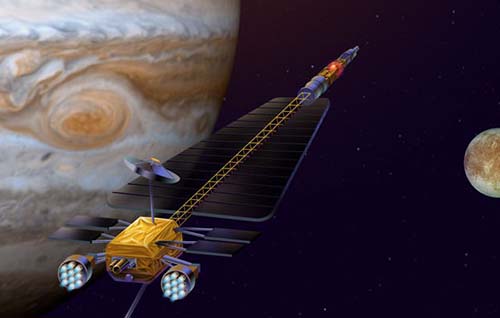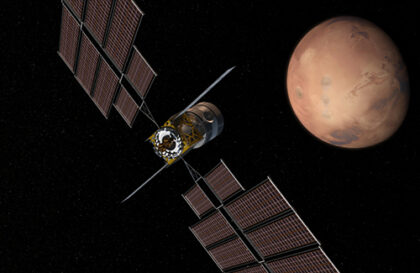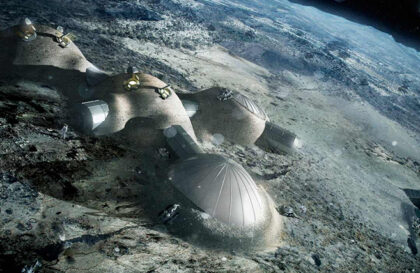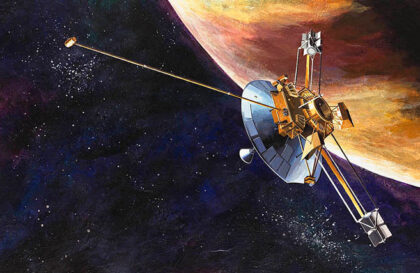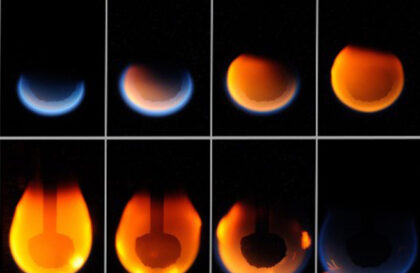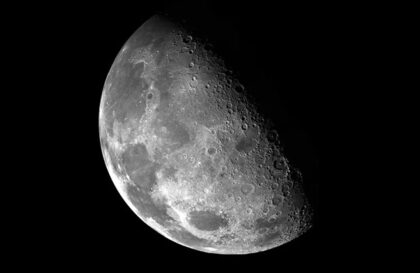Jupiter, the most giant planet in our solar system, has at least 95 moons. However, the four largest moons discovered by Galileo Galilei in 1610 are Io, Europa, Ganymede, and Callisto. These four moons are collectively known as the Galilean moons and are the leading candidates for space colonization in our solar system, along with Mars, Venus, and the Moon.
Illustration of Jupiter and the Galilean satellites. Credit: NASA
Europa is believed to have a subsurface ocean containing twice as much water as Earth. This makes it a prime candidate for the search for extraterrestrial life and a potential place for human settlement.
Ganymede, the largest moon in the solar system, has a magnetic field that can shield colonists from harmful radiation. On the other hand, Io has active volcanoes that could be a source of geothermal energy. Callisto, the most cratered object in the Solar System, may have large amounts of water ice that could be used as fuel and other resources.
Despite the potential benefits of colonizing Jupiter’s moons, significant challenges exist. The harsh radiation environment around Jupiter poses a significant risk to human health, and the distance from Earth makes resupply and communications difficult. The extremely cold temperatures and lack of a breathable atmosphere on these moons will require significant technological advances to create a sustainable human presence.
Colonization of Europe
Credit: Wikipedia (public source)
The moon’s icy shell is bombarded with deadly radiation from Jupiter’s magnetosphere, although the leading hemisphere is exposed to less radiation than the trailing hemisphere. Since Europa’s surface gravity is only about 13 percent of Earth’s, walking on the surface would be similar to walking on Earth’s moon. In addition, Europe has virtually no atmosphere, making it a barren and inert place with no sky colors, weather, or wind. Despite the hostile environment, studies show that establishing a research base in Europe is possible.
The study of Europa has been the focus of many space missions, including the Galileo mission in the 1990s and the Europa Clipper mission.
A person without a space suit on the surface of Europa would receive a lethal dose of radiation, making it necessary to develop specialized equipment and infrastructure to protect the colonists from this radiation. In addition, the extreme cold and lack of atmosphere on Europa will require developing advanced life support systems and habitats to support human life.
Illustration of Europa (foreground), Jupiter (right), and Io (middle) showing water plumes that reach the surface. Credit: NASA/JPL-Caltech
Europa’s subsurface ocean may harbor microbial life, making it a possible target for astrobiological studies. In addition, Europe’s water resources can support future exploration and colonization of the Solar System.
Colonization of Ganymede
Artist’s concept for a future settlement on Ganymede. Credit: futuretimeline.net
Ganymede, the largest moon in the Solar System, is a prime candidate for space colonization within the Solar System, along with Europa and Callisto.
With a gravity comparable to Earth’s Moon, it could be a viable candidate for terraforming and even permanent habitation. It has a lower escape velocity than Earth, so rockets need less fuel to lift off its surface. However, it needs to be clarified whether it is possible to settle on Ganymede. Additionally, Ganymede’s magnetosphere may provide some radiation shielding, but its effectiveness has yet to be discovered. The radiation level can vary depending on the side of Ganymede facing Jupiter. The surface of Ganymede receives eight rem of radiation per day, which is 333 times greater than the average number of terrestrial organisms in a year.
Ganymede’s freezing temperatures, lack of atmosphere, and limited resources will require developing advanced technologies and infrastructure to support human habitation.
Ganymede’s unique characteristics, such as its large size and subsurface ocean, make it an ideal location for scientific research and exploration. In addition, the satellite’s abundant water resources can support human settlements, as water is necessary to sustain life and can also be used for fuel and other purposes.
Colonization of Callisto
Credit: Wikipedia (public source)
Callisto is the most distant of Jupiter’s four Galilean moons and the third-largest moon in the Solar System. Its surface is covered with craters with bright white spots visible in dark areas. The lighter areas are mostly ice, while the darker areas are regions where the ice is eroded. NASA’s HOPE probe chose Callisto as a target for study because of its safe distance from the planet’s radiation belt. The radiation level on Callisto is comparatively lower than on other moons, making it a suitable candidate for colonization.
Callisto is the only Galilean moon of Jupiter that is at a safe distance from its parent planet. The colonization of Callisto could serve as a staging point for missions to and from the Kronian system and facilitate missions further into the Solar System. Scientists have proposed creating a reusable surface habitat on Callisto and harvesting water ice for conversion into rocket fuel.
The study of Callisto has been the focus of several missions, including the proposed Europa Jupiter System Mission (EJSM), launched in 2020. Callisto’s metal core is surrounded by a stone mantle covered with an icy carapace.
The distance from Earth and the harsh conditions of space make it difficult to transport resources and personnel to Callisto. The lack of a significant atmosphere and low gravity also pose challenges in building and maintaining buildings for human habitation. Callisto’s geological stability and distance from Jupiter’s radiation belts make it a safer option for human habitation than other moons in the Jupiter system. The distance from Callisto to Jupiter is about 1,882,700 km, from Io – 421,700 km, Europa – 670,900 km, and Ganymede – 1,070,400 km.
Colonization of Io
Credit: Getty Images /MARK GARLICK/SCIENCE PHOTO LIBRARY
The colonization of Io is seen as a potential solution to the global water crisis. Io has a hard, rocky surface suitable for supporting a human colony. Additionally, Io is the only one of Jupiter’s four main moons with a solid, rocky surface and is likely to be colonized for geothermal energy. Modern research shows that the colonization of Io can be carried out with the help of geothermal energy. This would protect the colony from Jupiter’s radiation belt.
Among all of Jupiter’s Galilean moons, Io and Europa are closest to the planet and therefore receive the highest dose of radiation. Both satellites have no magnetic field and their atmosphere is extremely thin, which increases the impact of radiation. Io receives about 3,600 rem per day, while Europa receives about 540 rem.
To get an idea of the scale: on Earth, the average person is exposed to less than 1 rem of radiation per day, with this figure in developed countries being 0.62 rem. A dose of 500 rem per day would likely be lethal to humans, and exposure to levels of about 75 rem over several days could cause serious health problems, including radiation poisoning.
Io receives lethal radiation from Jupiter’s radiation belt, and the moon’s volcanic activity would require shielding from radiation and volcanic activity. Also, the presence of water on Io could lead to rain and potentially cool and stabilize it, while the possibility of water coming to Io from Europa is debated. Providing enough water for Io could result in a large portion of the moon being covered in water, and the orbiting electromagnets would be needed to transfer geothermal energy to the orbital electromagnets.
Another incentive for the colonization of Io is the availability of mined sulfur, a valuable resource in space. Additionally, various other materials on Io may be helpful for colonization, and extremophile life may survive on Io. However, terraforming Io will be extremely difficult, and humans can walk around Io’s surface without wearing protective suits because the moon’s variability could cause previously dormant volcanoes to erupt without warning.
Banner image: Wikipedia (public source)
Image credit:
https://en.wikipedia.org
https://www.universetoday.com
https://en.wikipedia.org/wiki
https://www.universetoday.com
https://www.universetoday.com
https://ru.wikipedia.org
